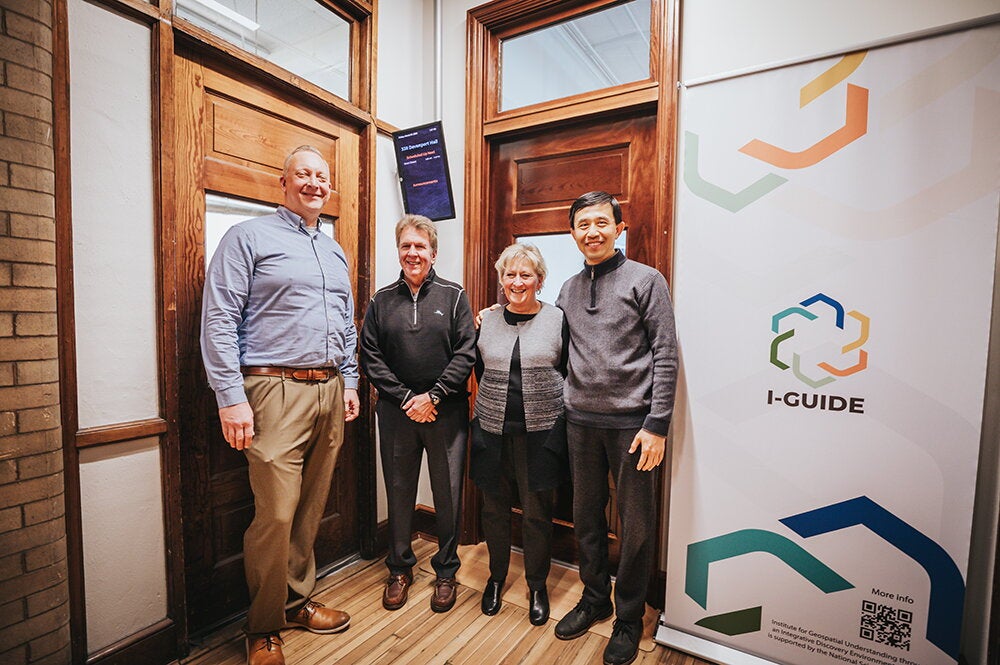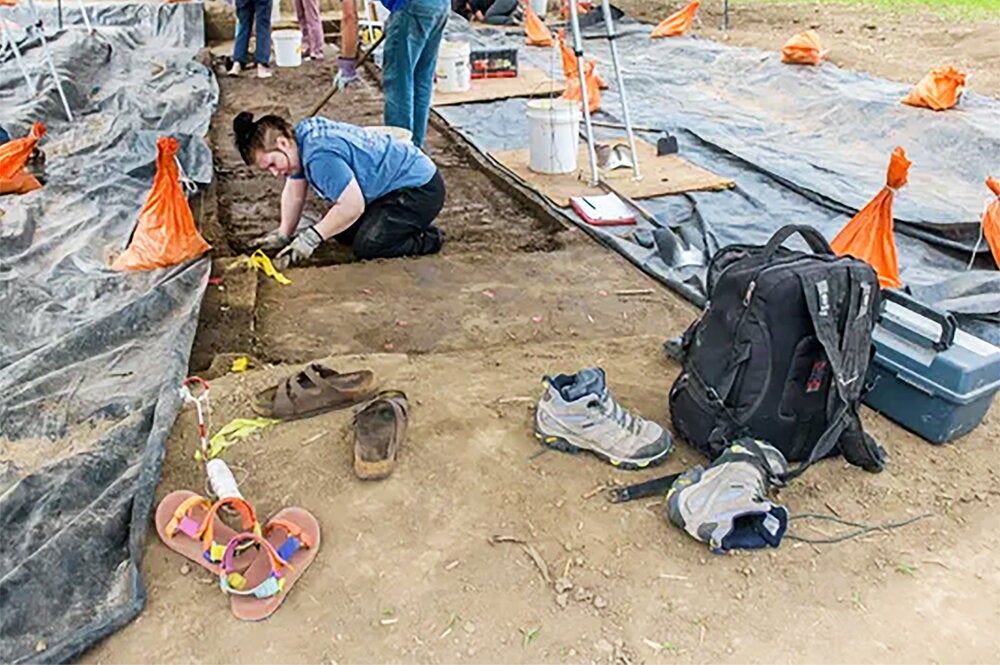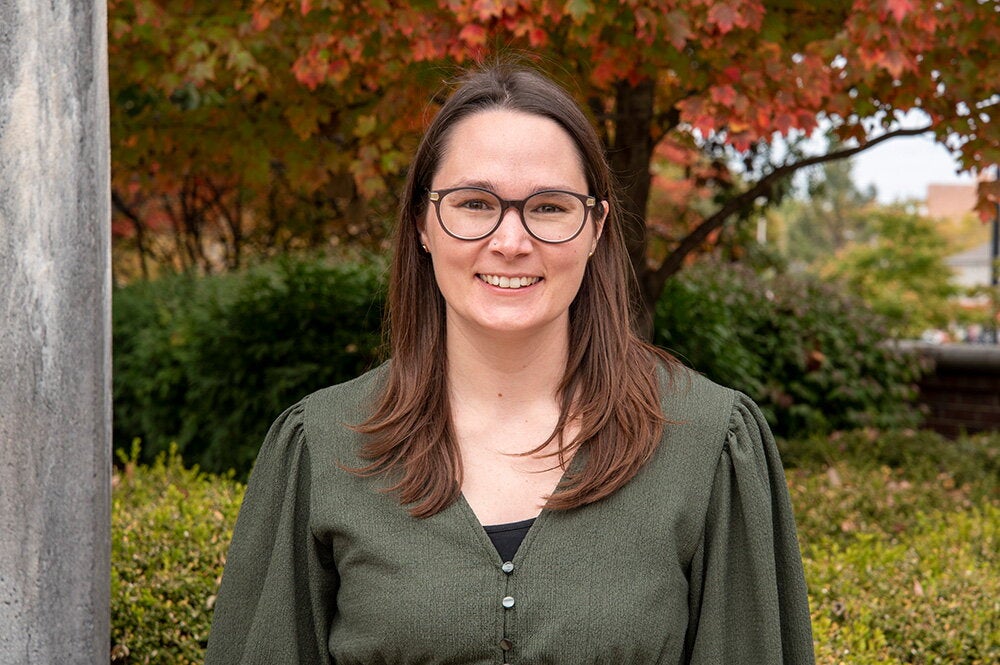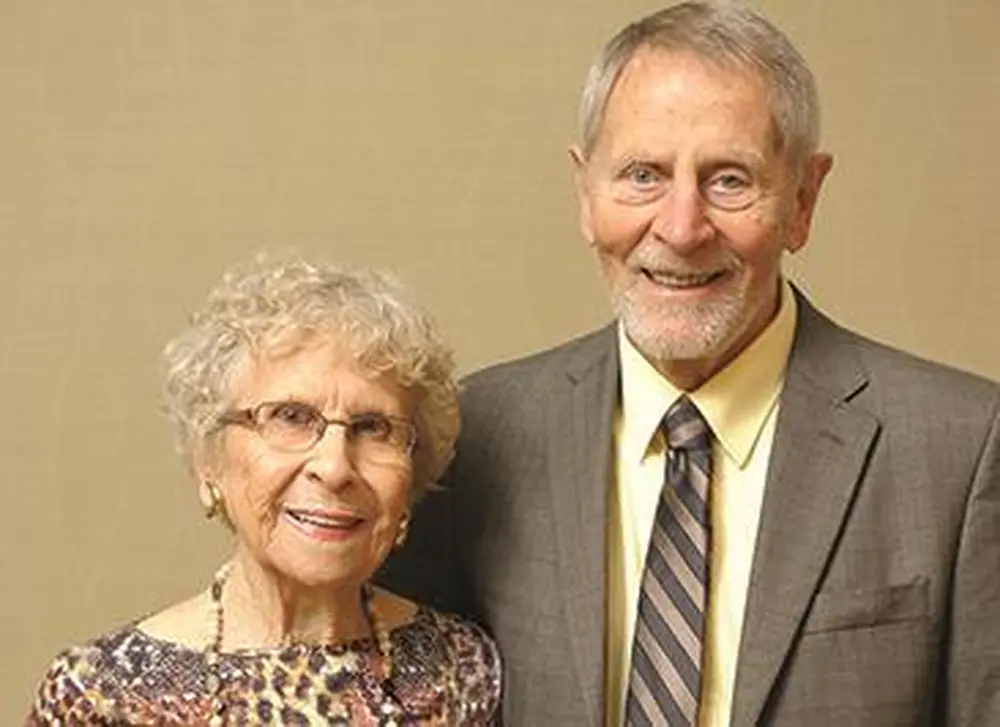
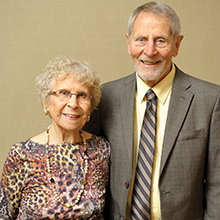
Ted Brown remembers the day he drove a car inside the Beckman Institute for Advanced Science and Technology–the large, interdisciplinary laboratory that anchors the northern edge of the University of Illinois campus.
It was the late 1980s, and the beautiful building was still under construction, so Brown drove into the large atrium space, which was filled with construction equipment. Also in the car were Arnold and Mabel Beckman, the couple that had donated $40 million for the creation of the institute.
Brown remembers Mabel Beckman looking around and exclaiming, in stunned delight, “Oh Arnie, what are we doing?”
“They were both so full of enthusiasm,” says Brown, who served as the Beckman Institute’s first director from 1987 to 1993. In fact, Brown and his wife Audrey say that the enthusiastic generosity of Arnold and Mabel Beckman inspired them to also become givers. The Browns went on to establish two different endowments–one to support undergraduates from all LAS departments and the other to help chemistry undergrads specifically.
“We noticed how much sheer enjoyment the Beckmans got out of giving to people,” Brown says.
So, in recognition of Ted and Audrey Brown’s continued commitment to the university and college, they are recipients of the 2015 LAS Quadrangle Award.
Ted is from Green Bay, Wisconsin, and Audrey from Oldenburg, a small town near Indianapolis. When Ted’s family moved to Indiana, not far from where Audrey lived, the two of them met at a high school dance.
Ted went on to the Illinois Institute of Technology in Chicago, where he received his bachelor’s degree in chemistry, but the couple kept up their romance through correspondence, and Audrey says, “We have the box of letters to prove it.”
The Browns married in 1951, when Ted was in the Navy, and he received his PhD in chemistry from Michigan State in 1956. Ted was unsure whether to choose academics or industry, but he chose a faculty position at U of I. He and Audrey spent their first year on campus in a rented house that stood directly behind the chemistry building. That house no longer exists, but it is only fitting that today the spot is part of a complex of life sciences buildings just across from the Krannert Center for Performing Arts.
Ted taught and did research at Illinois until he took on the job of vice chancellor for research and dean of the graduate school in 1980. He says he found that he “loved being an administrator,” and he kept up his research in chemistry but he no longer had time to teach.
Then, in 1983, there came the pivotal meeting that Ted attended in the office of Morton Weir, who was then vice president of academic affairs. Campus leaders decided to put together a proposal for an interdisciplinary lab that would cross college and departmental lines, uniting the engineering campus with the humanities and social sciences.
Prior to the Beckman Institute, there were no broadly interdisciplinary labs on campus. This lab would bring together researchers from all parts of the campus, with its emphasis on not only the physical sciences and engineering, but also the biological and behavioral sciences
“It was an experiment on a scale that had not been done before anywhere,” he says.
During the process of establishing the institute, Ted and Audrey became close friends with the Beckmans, who served as their inspiration.
“The Beckmans were generous, forward-looking people who influenced us to make something of a difference in our own small way,” Ted says.
However, Ted and Audrey already had a penchant for giving even before meeting the Beckmans. Throughout the 1960s, they were both active with the Urban League, breaking down racial barriers in Champaign-Urbana, and Ted was involved with the Opportunities Industrialization Center, which provided training to people with disadvantaged backgrounds.
When the Champaign-Urbana community experienced an influx of Vietnamese “boat people” in the late 1970s, Audrey helped to make their transition to America easier, and she served on the University YMCA board. Audrey also decided it was never too late to pursue a degree, and she received her bachelor’s degree in religious studies from Illinois in 1989.
Since 2000, the Browns have lived in Florida, although they also maintain a family summer home in the Upper Peninsula of Michigan. But they make a point of coming back to Champaign-Urbana to meet the students they support.
The Browns established the first endowment in 1998 and the second one in 2012. Both scholarships are aimed at outstanding LAS students struggling to fund their education. And although the newer endowment is targeted at chemistry students specifically, undergraduates qualify if they are in a related field, such as chemical engineering.
The Brown scholarships currently help to support 10 students.
Audrey says the scholarships were made possible, in part, because of the success of the chemistry textbook that Ted co-authored—Chemistry: The Central Science. The textbook, now in its 13th edition, is the best-selling general chemistry textbook of all time.
The Browns have always been committed to international students, hosting them at their Champaign home and helping immigrants in the community. So it is fitting that one of the first recipients of the Ted and Audrey Brown Scholarships was a young woman from Poland, Kinga Baran.
“The scholarship has made it possible for me to concentrate on my studies by taking away the stress of worrying about my financial situation,” Baran said in a U of I article at the time. “The Brown scholarship has made me more confident about my ability to succeed.”
“The thing is that when people receive scholarships, it’s much more than the money,” Ted says. “It’s the fact that somebody values them.”
